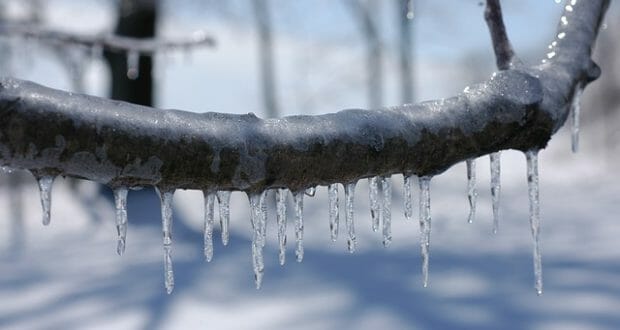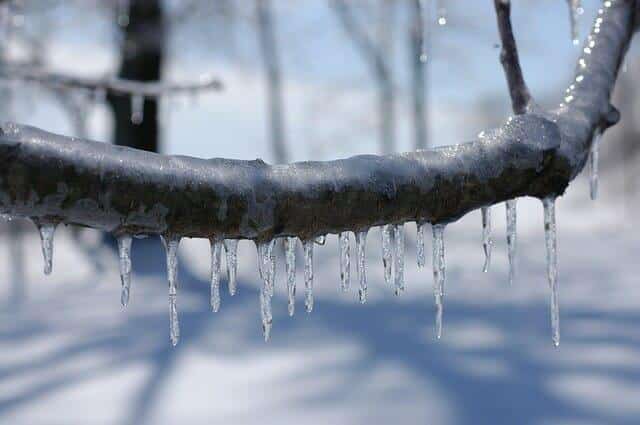It’s a simple fact. Power outages happen. Any outage always presents challenges, but a winter power outage presents a whole new set of challenges.
Some outages affect a city block, others a whole neighborhood or region. The cause is typically an ice storm, and the outages can be far-reaching. In Quebec, Canada, an ice storm left millions without power for up to six months in the cold of the Canadian winter. The result was a desperate lack of resources and support to any who needed any kind of assistance.
Preparing for a Winter Power Outage
A gas-powered generator with an ample supply of gas can make a lot of things easier. If you’re really ambitious, you could have a gas-powered, whole house generator installed. If you’re lacking both, you’ll have to get resourceful
Heat
Fireplace. This is probably the most common heating alternative that people have in their homes. It’s not as efficient as a wood-burning stove, but during a winter power outage, it’s a welcome resource. The ability of a fireplace to provide heat to one room is significant, but you may find that other rooms don’t receive as much heat depending on the size of your house.
However, it will keep the rest of the house relatively above freezing, but I would hunker down with family next to the fireplace on couches and sleeping bags. You’ll also want to open cabinets under sinks and make sure bathroom doors are open to prevent pipes from freezing.
Wood burning stove. Perhaps the best alternative heat source and capable of spreading heat beyond one room.
Black blankets in the sun. A curious suggesting from the Emergency Management Agency suggests putting black blankets on the floor where sunlight comes through the windows. The black color absorbs heat and will provide a bit of extra heat to the house.
Dangerous sources of heat include kerosene heaters, gas stoves or charcoal grills. They produce carbon monoxide over time. A gas range can be used occasionally for cooking, but should not be used as a heat source for a long duration.
Lighting
Flashlights with plenty of backup batteries and candles are the lighting options of choice. LED flashlights are a good choice because of the amount of light they cast with a minimal power drain on batteries.
Perfect Backup Power For The Ultimate Disaster Or Emergency Situation!
Water
If your water is from a municipal water source, there’s a good chance you’ll still have water during a winter power outage. Municipal water is gravity-fed from tall water tanks, but they need to be refilled from time to time. If you have a well dependent on an electric pump, you’ll have to find alternatives.
- Stored and filled 5-gallon water bottles.
- Melt snow and ice in a 5-gallon bucket set in the sun indoors.
- If you hear a weather report that portends the possibility of an outage, fill your bathtub with water but use it only for flushing the toilet. A bucket in the toilet will give it a good flush.
- Avoid frozen pipes by letting the faucets slowly drip if you are on municipal water. If the heat in your house is a problem and you have a well, you’re wise to drain the pipes to prevent them from freezing.
Food
- Refrigerator and freezer. Food will last in a refrigerator for 24 hours and in a freezer for 48 hours if you open the doors minimally. You also can place ice into plastic bags and turn your fridge/freezer into a large cooler. Alternatively, of course, you could place food outdoors — provided you take precautions to protect it from wildlife.
- Stock up on foods that don’t require refrigeration or freezing. It’s easy to do. If it’s on the shelf in a store, it will survive a power outage.
- You have some options here:
- Outdoor on a grill
- On a gas range
- On top of the wood-burning stove
- Next to the fire in the fireplace in a Dutch oven
- Refrigerator realities
- Set to coldest settings if you suspect an outage is possible
- Coolers in the garage filled with plastic bags of snow and ice
- Outside in a snowdrift but beware the animals. Use a 5-gallon bucket with a locking lid
Dependable Backup Power In The Palm Of Your Hand
Communication
- Cell phones and the charging challenge. It’s hard to charge a cell phone without electricity, but you could use a car charger in the car, a solar charger about the size of a notebook, a generator or a cell charger power pack.
Bailing out
If you determine the situation is unbearable for you and your family, you’ll need to bail out. This assumes you have somewhere to go that’s at least comfortable like a neighbor, friend or family member who has better resources, or a local shelter housing people and families who are ill-equipped to handle the winter power outage. But before you bail, there are some steps you should take:
- Drain the water pipes
- Turn all of your circuit breakers to the off position. This will prevent a power surge when the power come back on. In fact, some people take this step the minute a power outage occurs at any time of year except for a room with a few lamps to signal that the power is back on.
- Pour anti-freeze into your toilets and drains for every sink, bathtub and shower
- Make sure all doors and windows are locked, and drapes and curtains drawn
- Take or dispose of any food in fridge or freezer or other perishables like bread
Preparation is the key when it comes to a winter power outage
Any power outage presents problems. It’s a good idea to think ahead to what alternative resources you will need during a power outage and make sure you have them in place.
What tips would you add? Share your advice in the section below:

